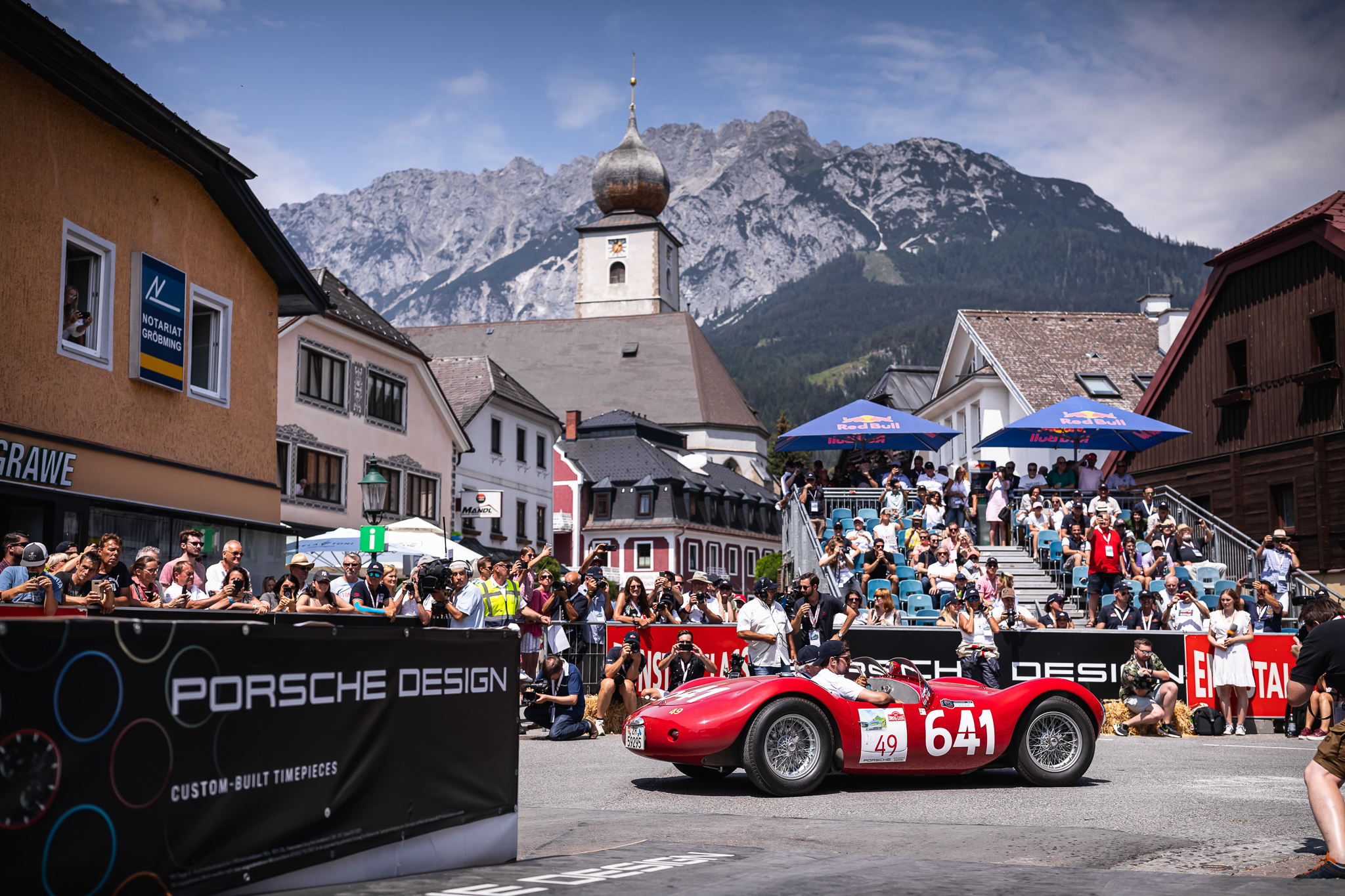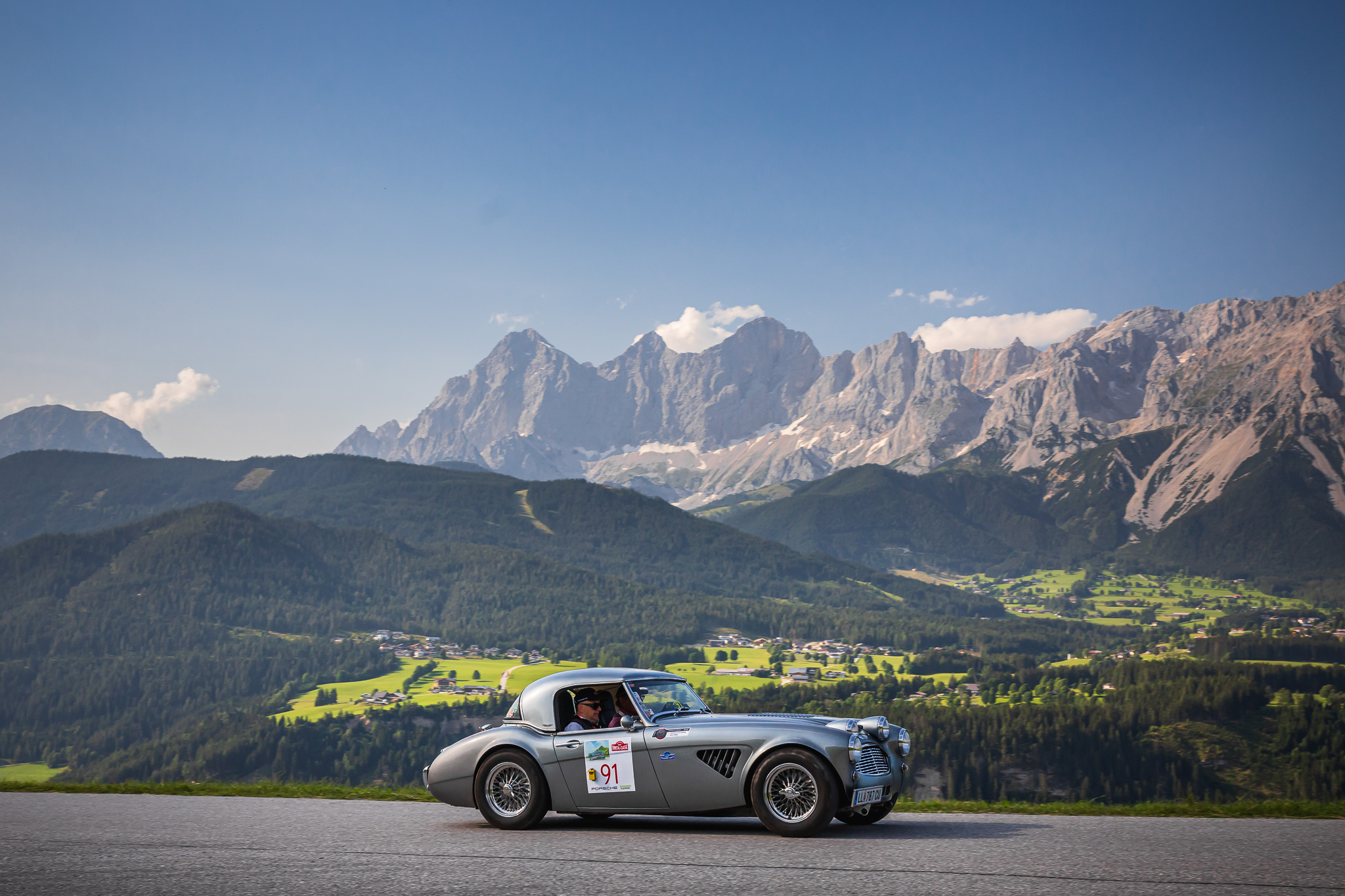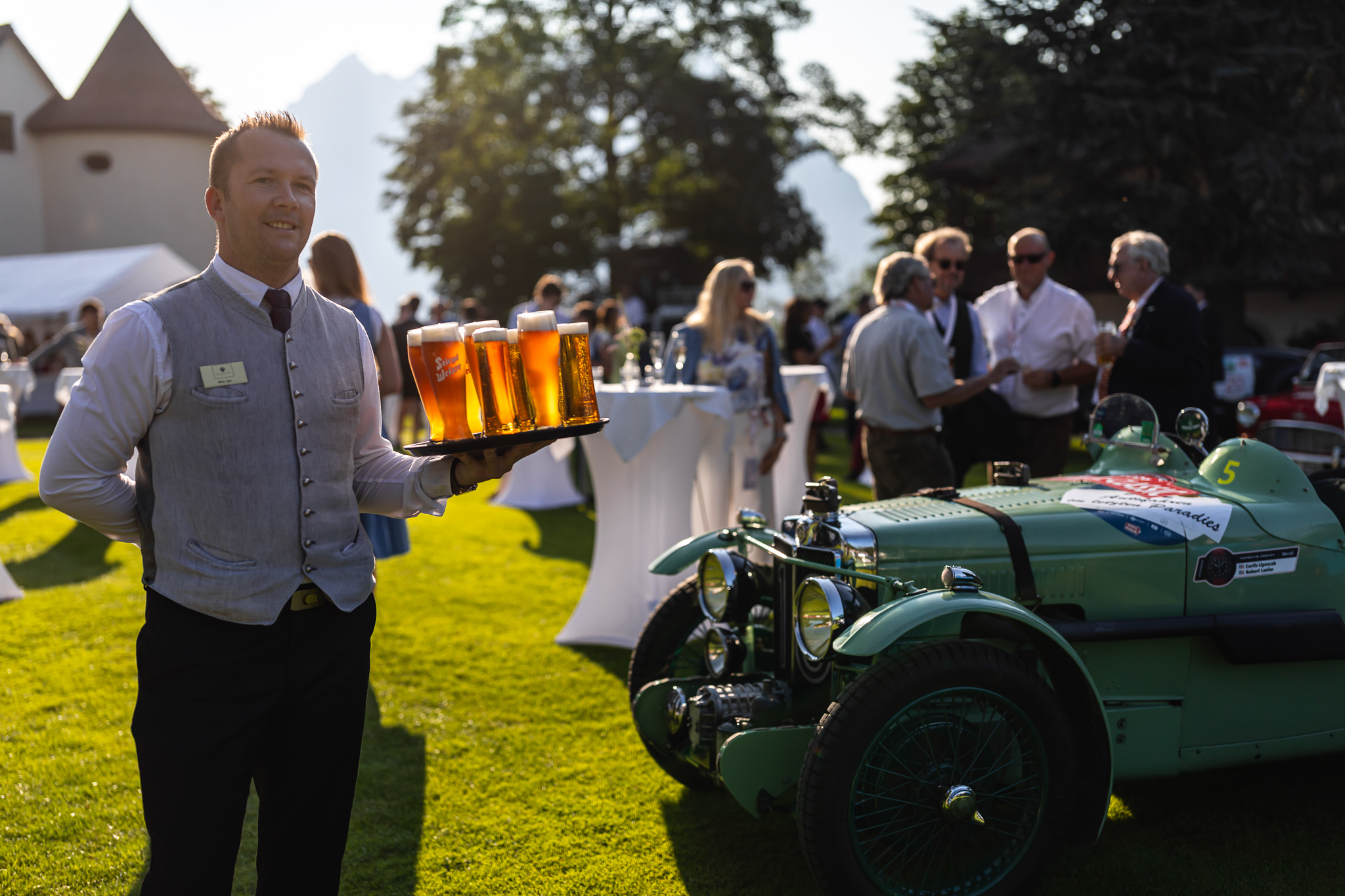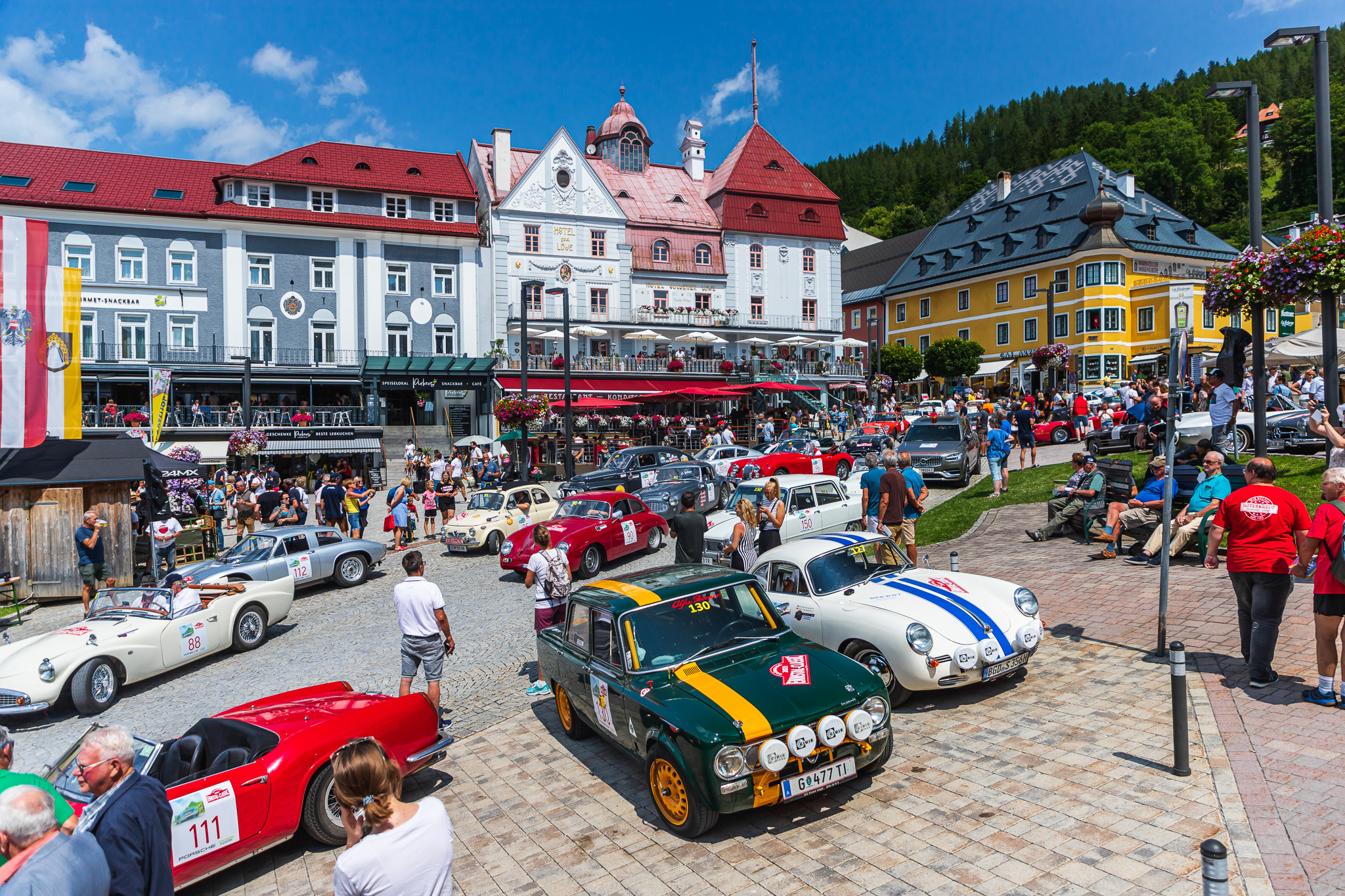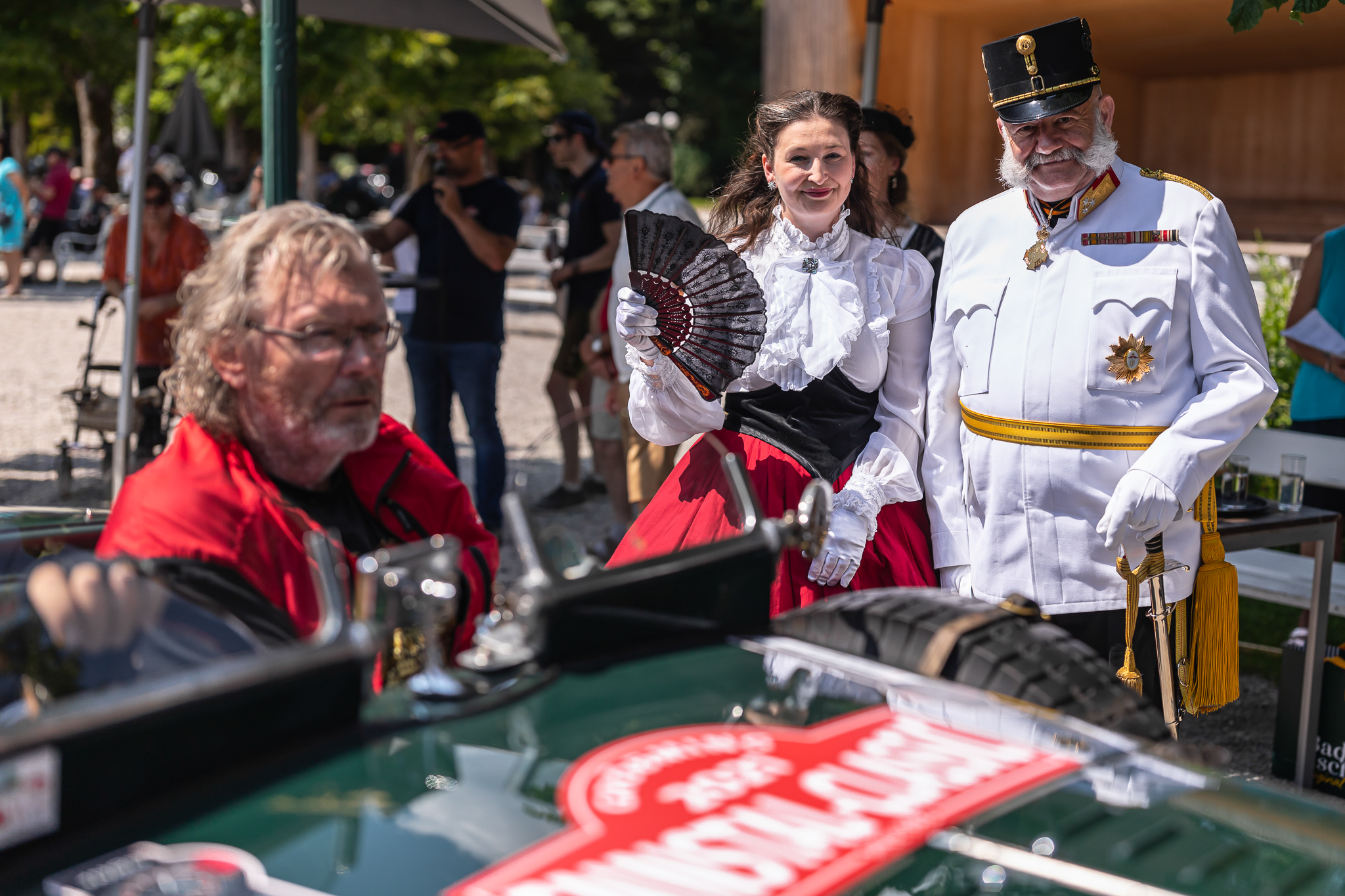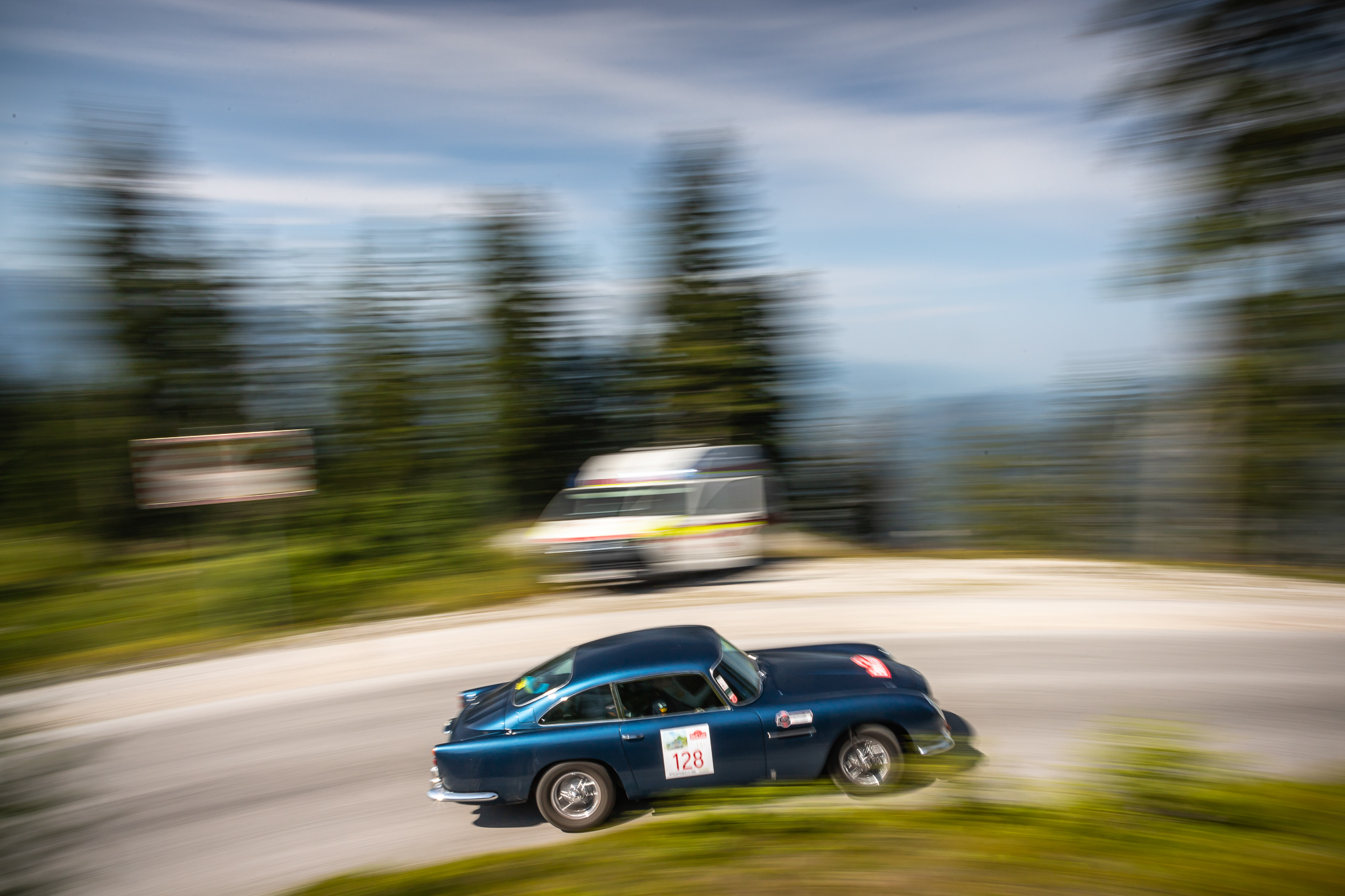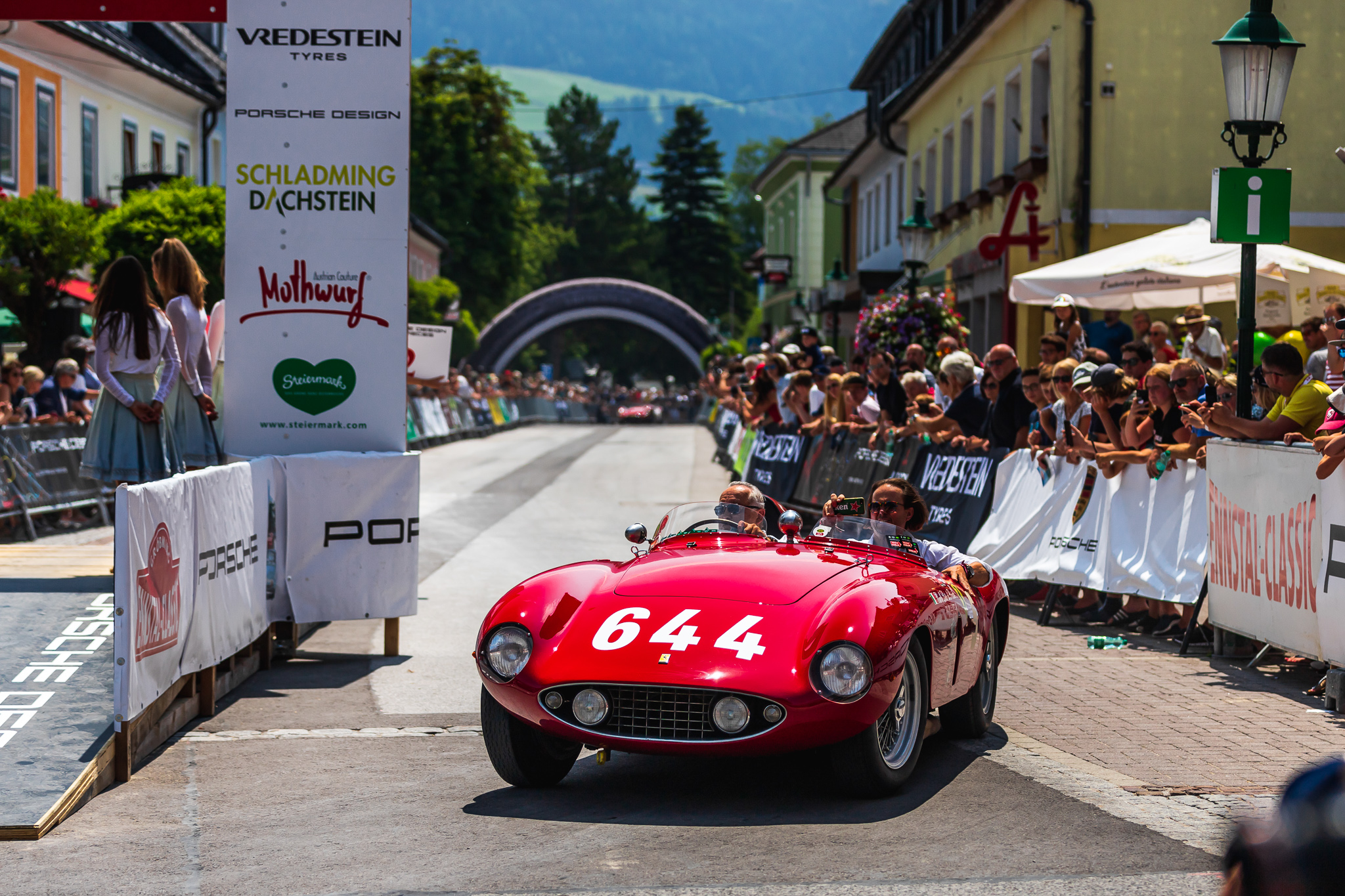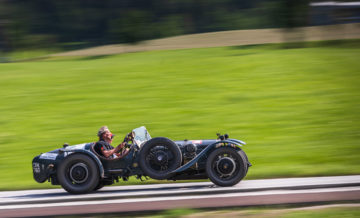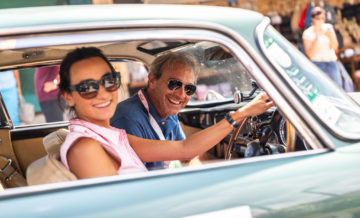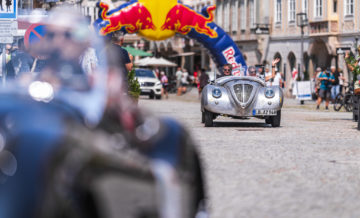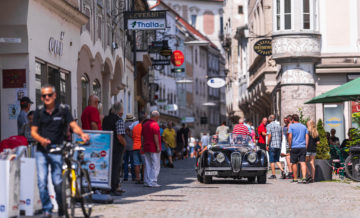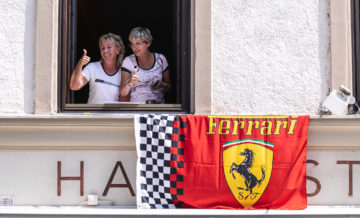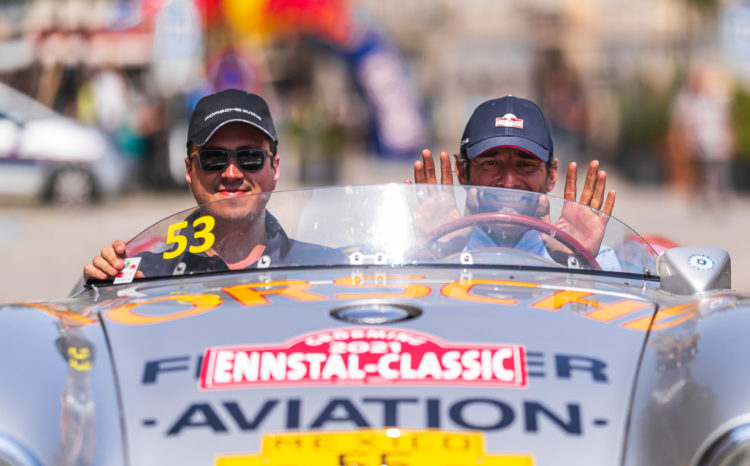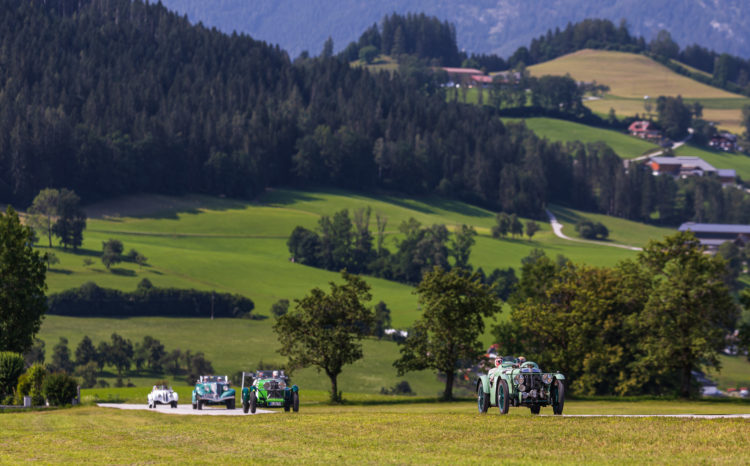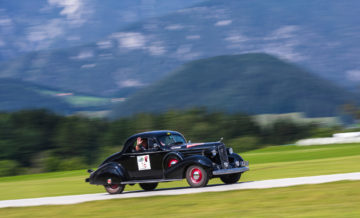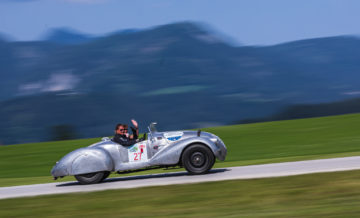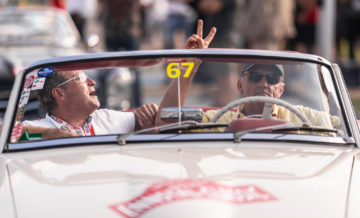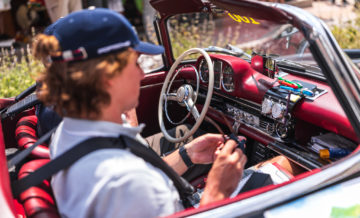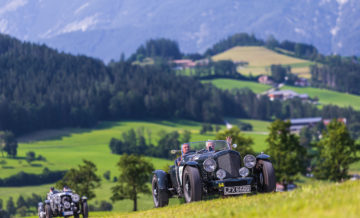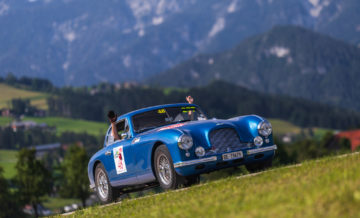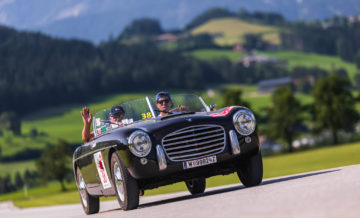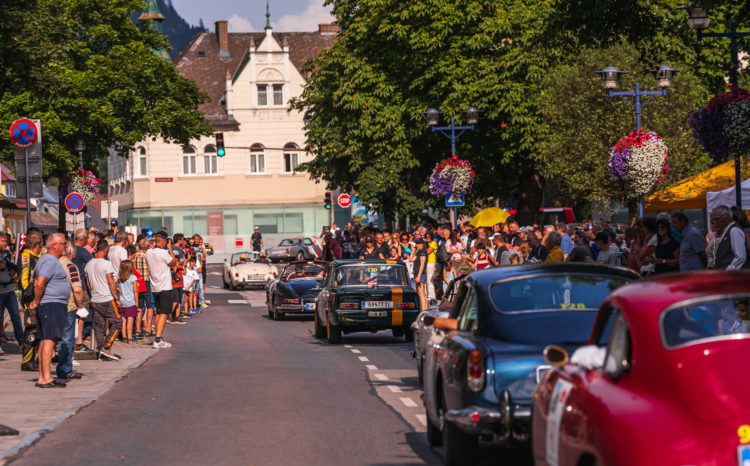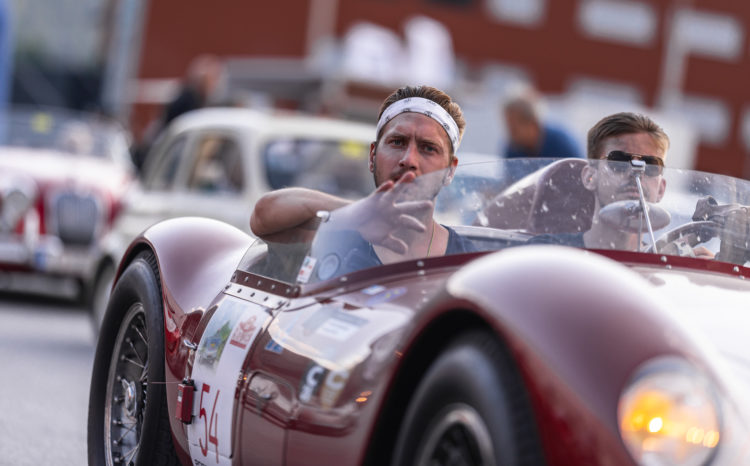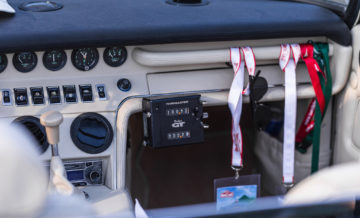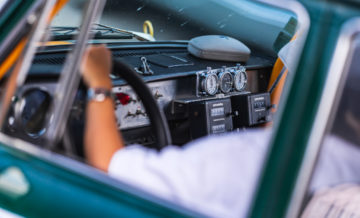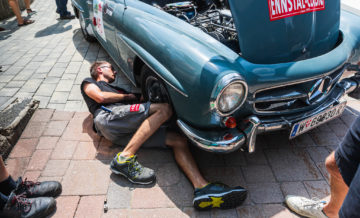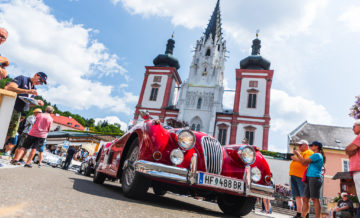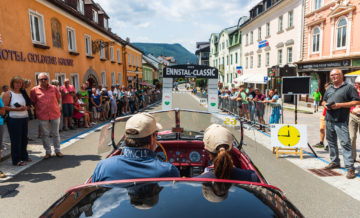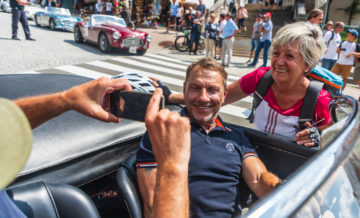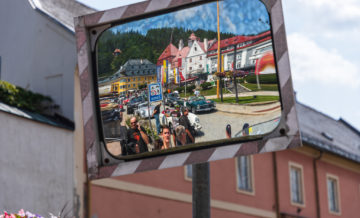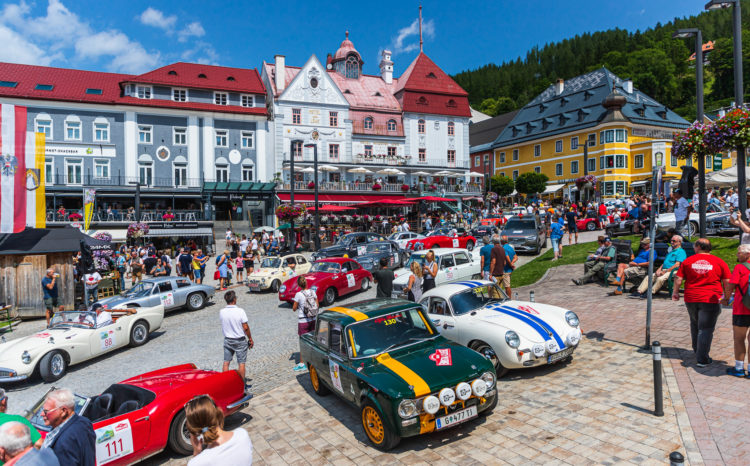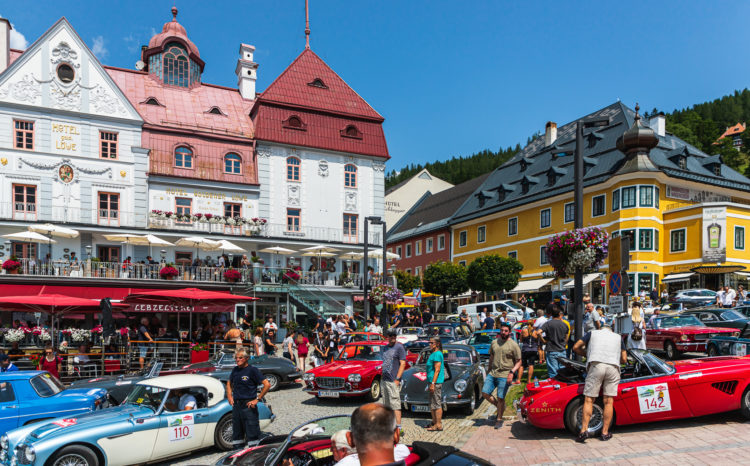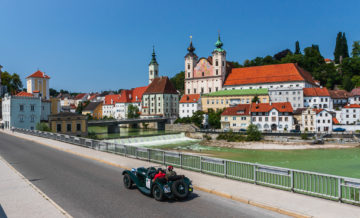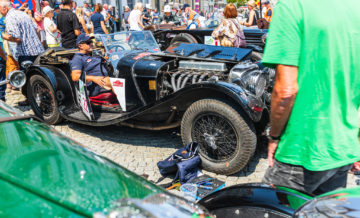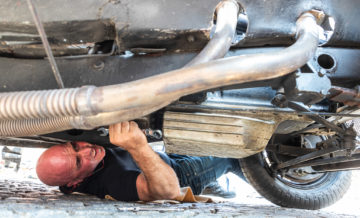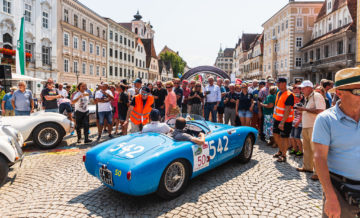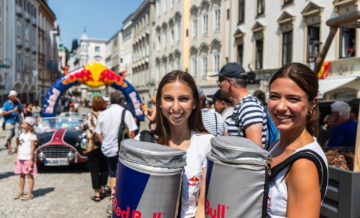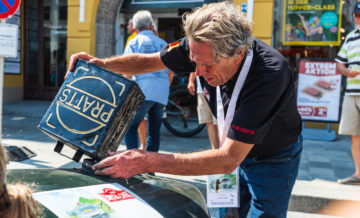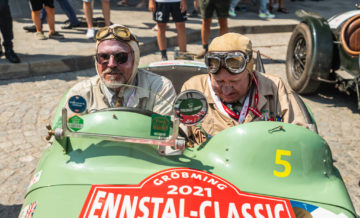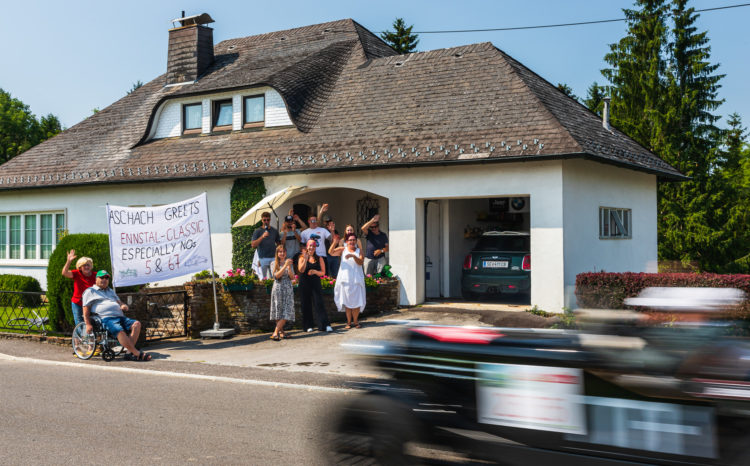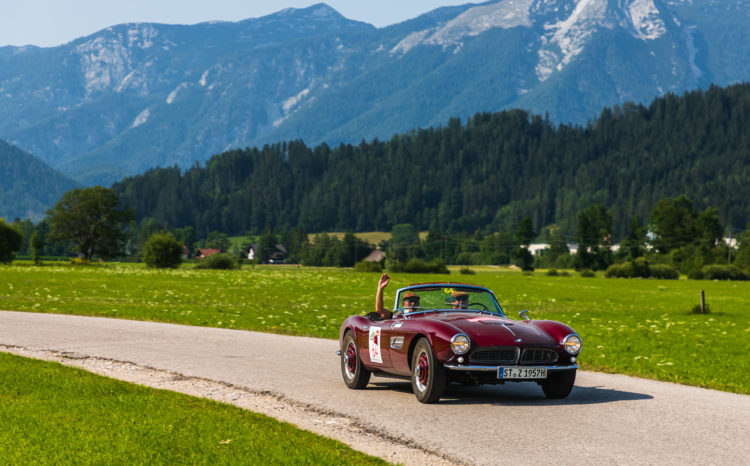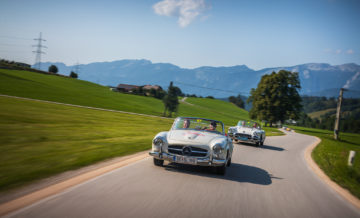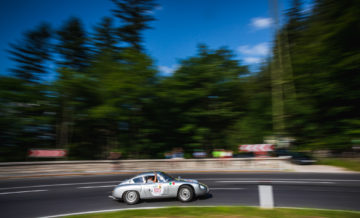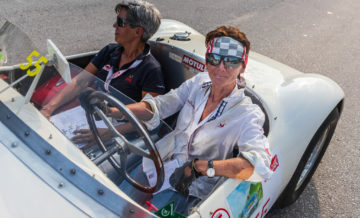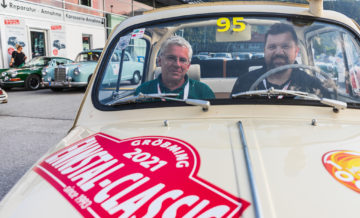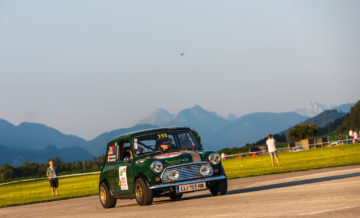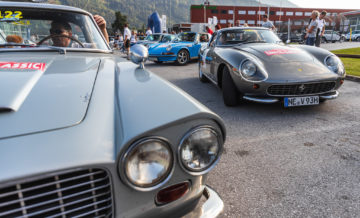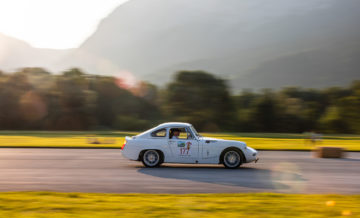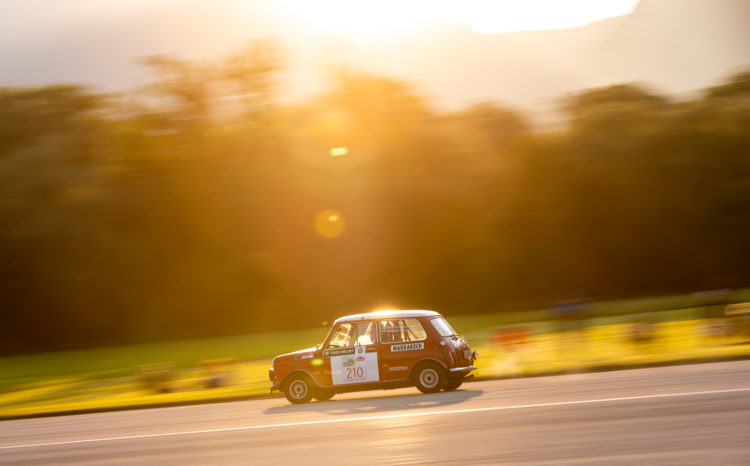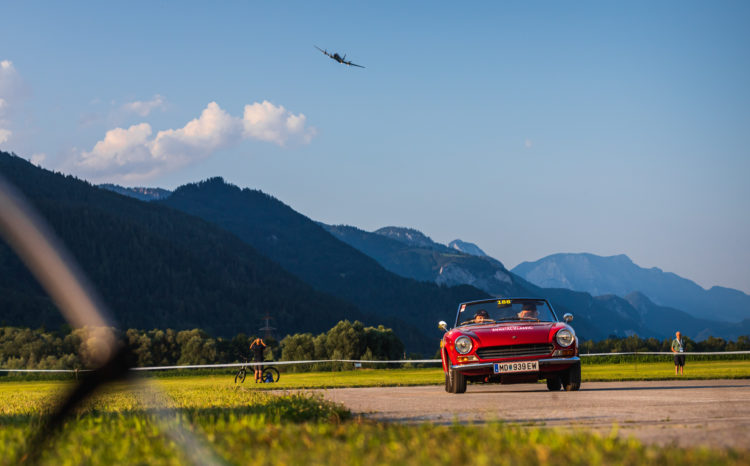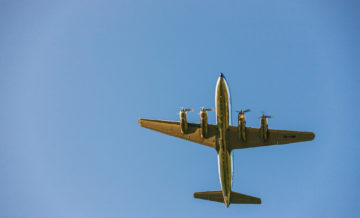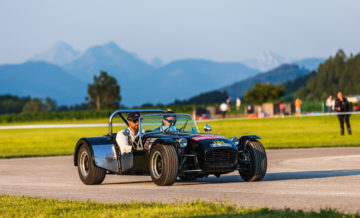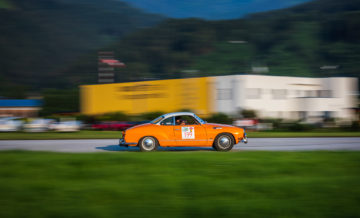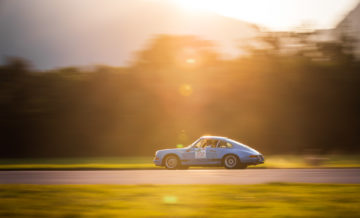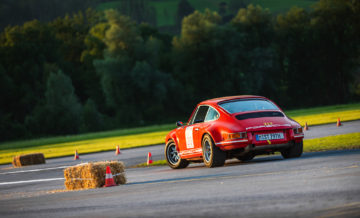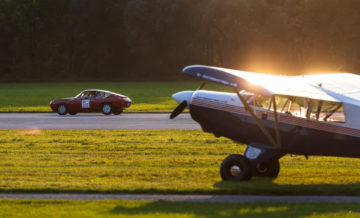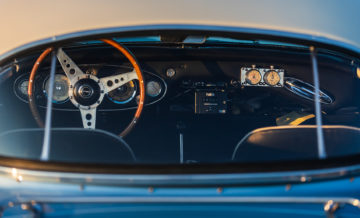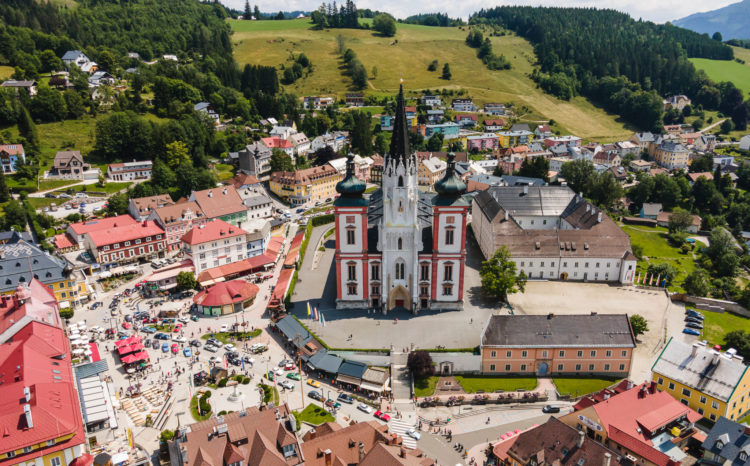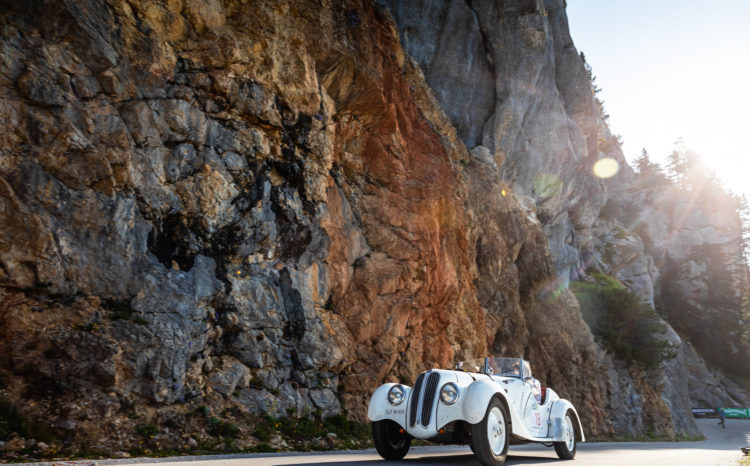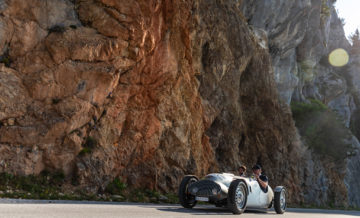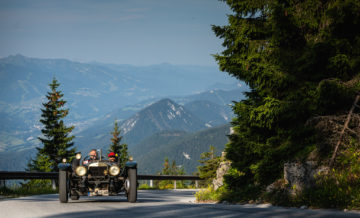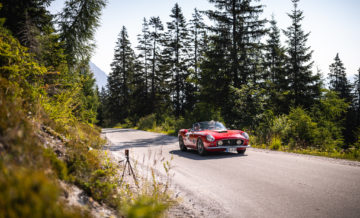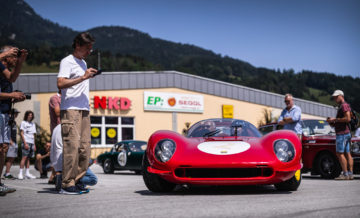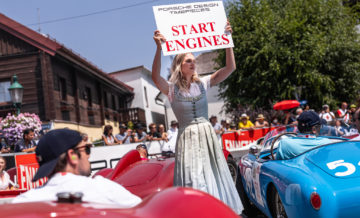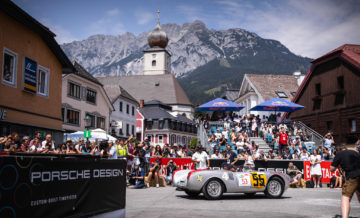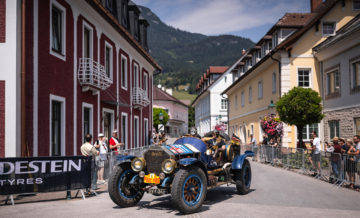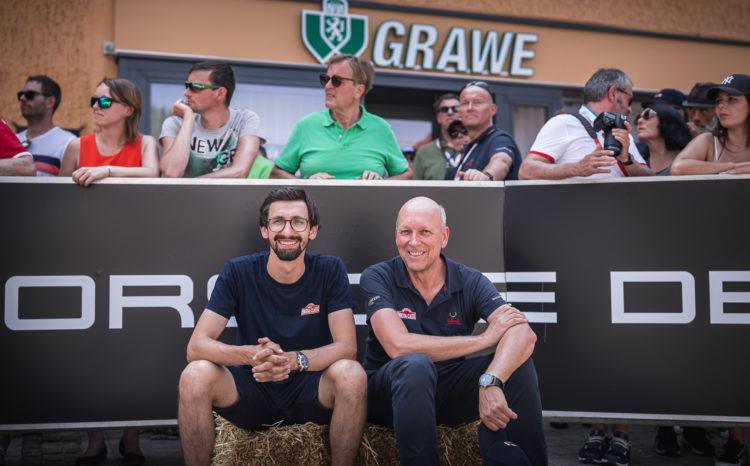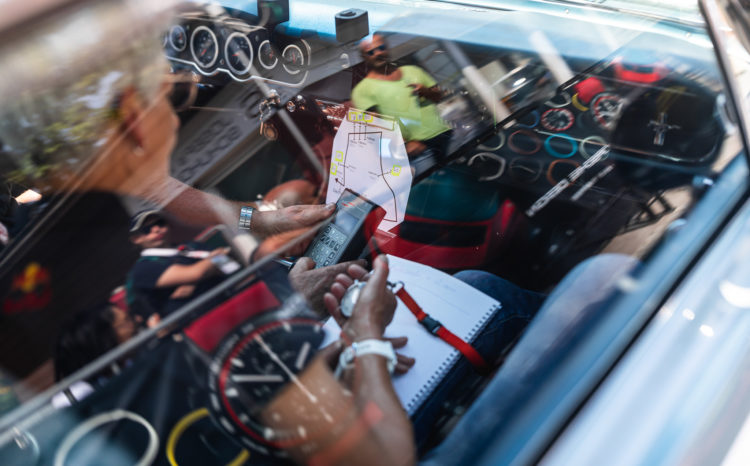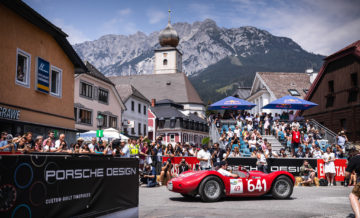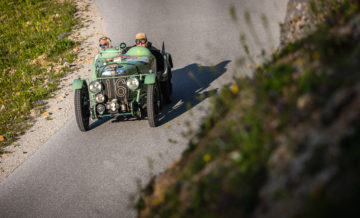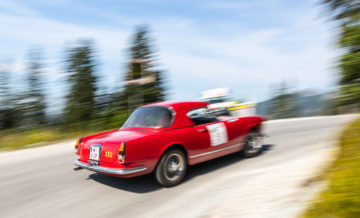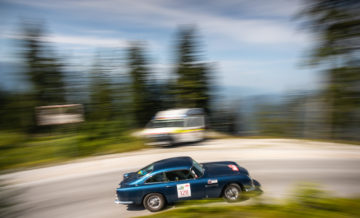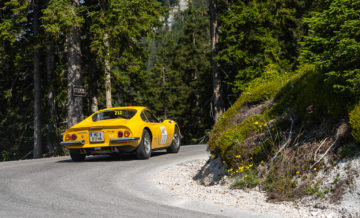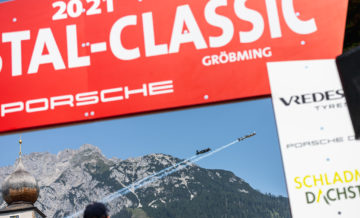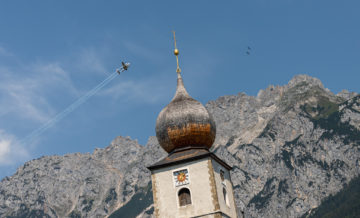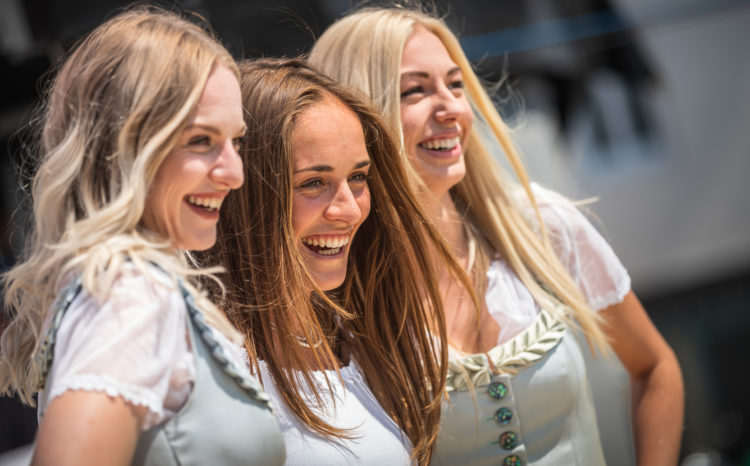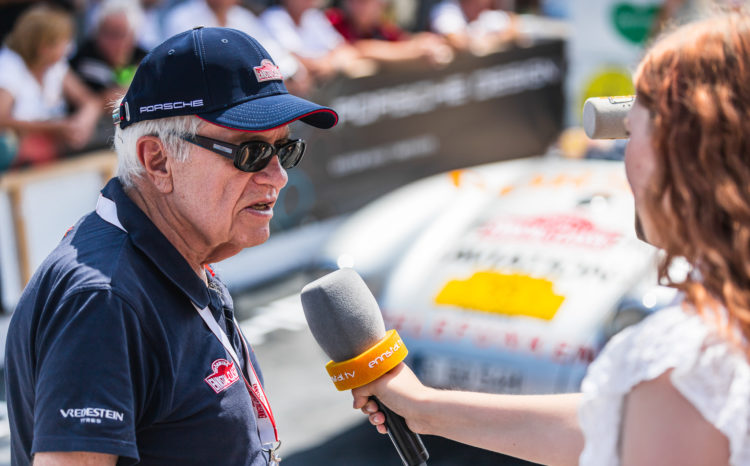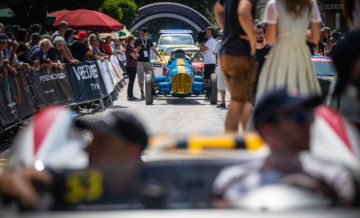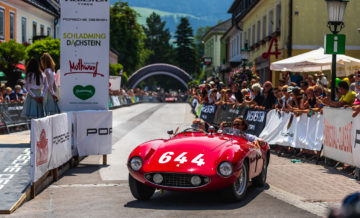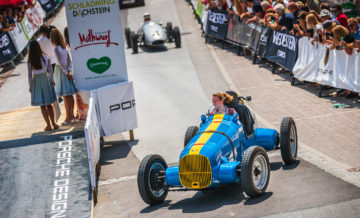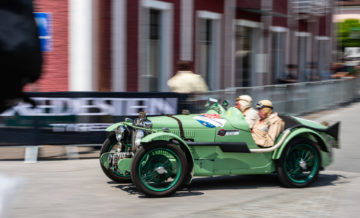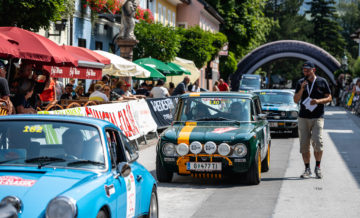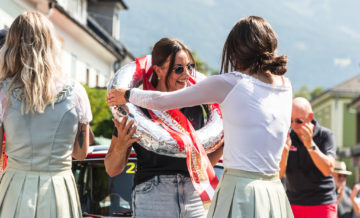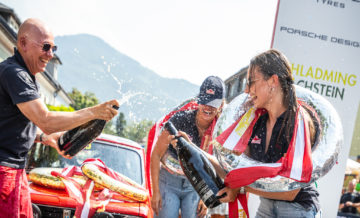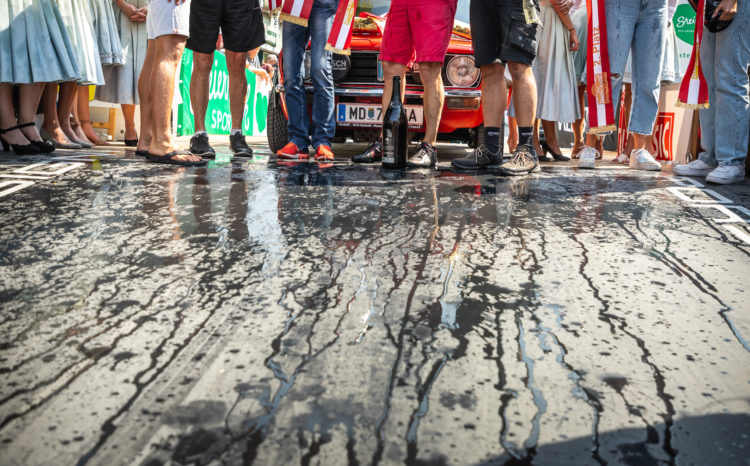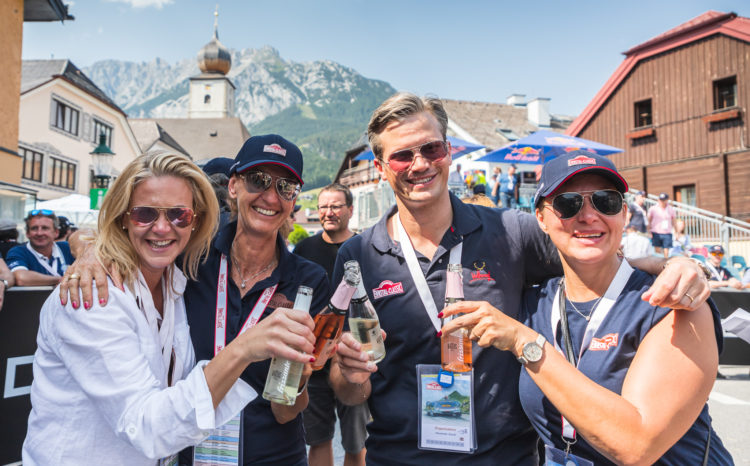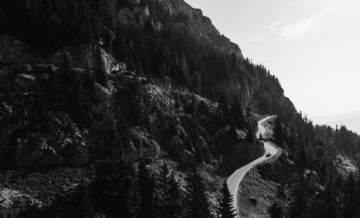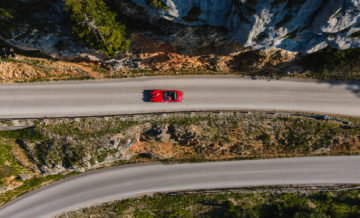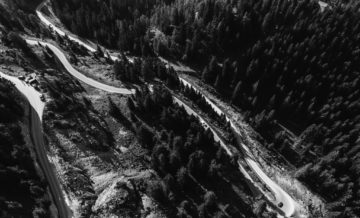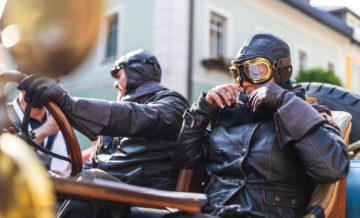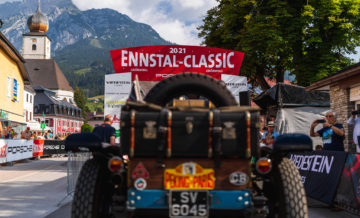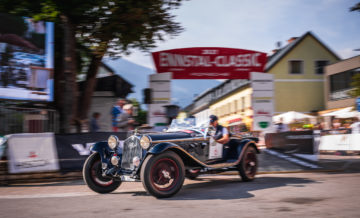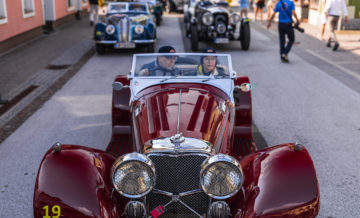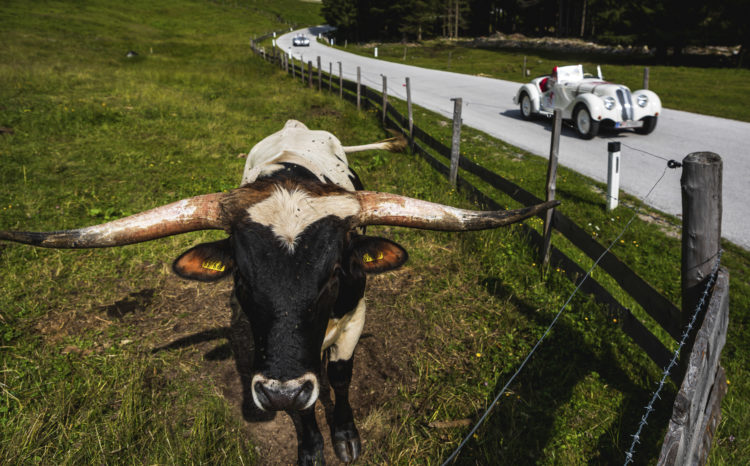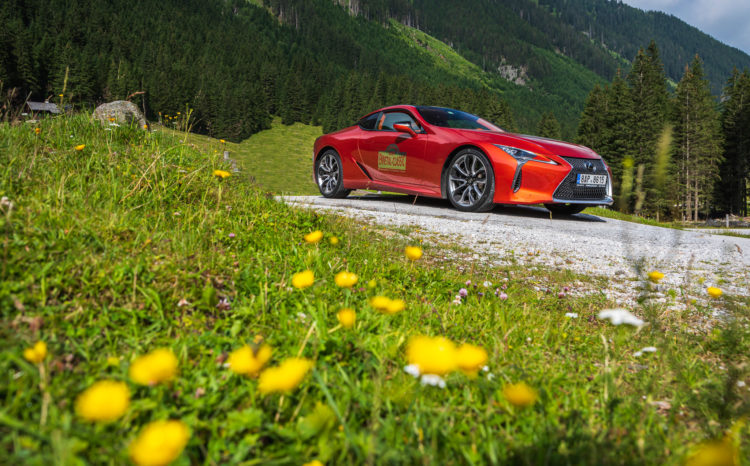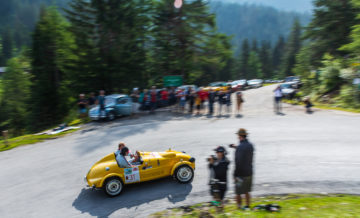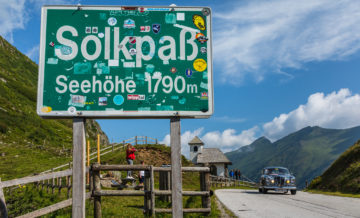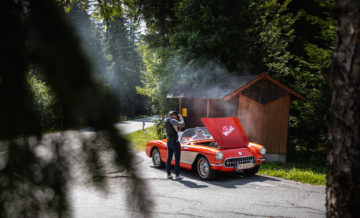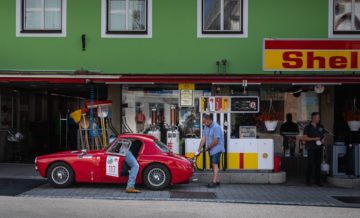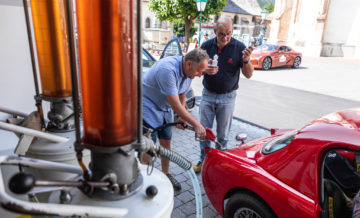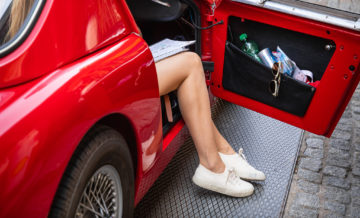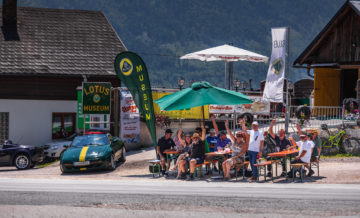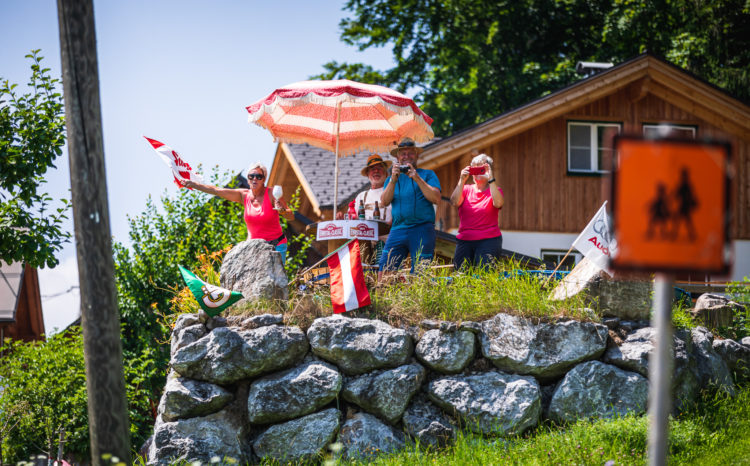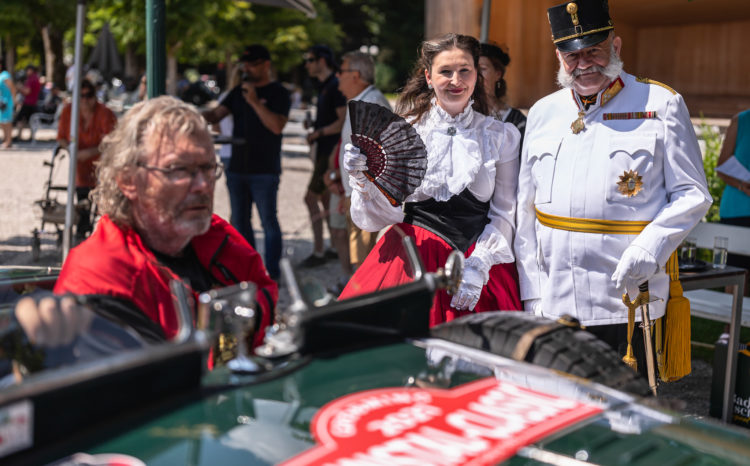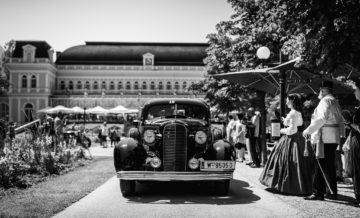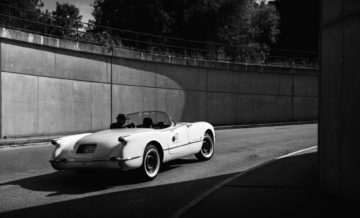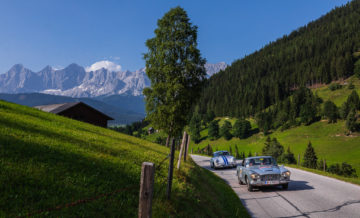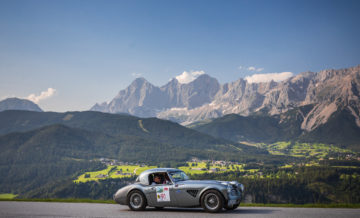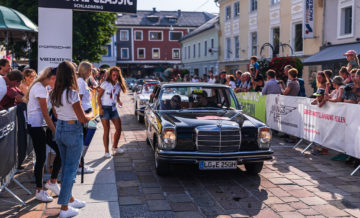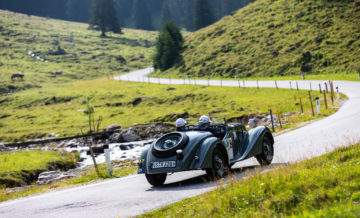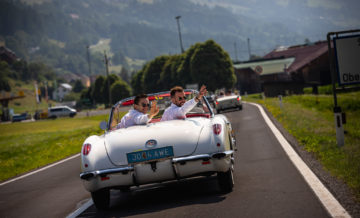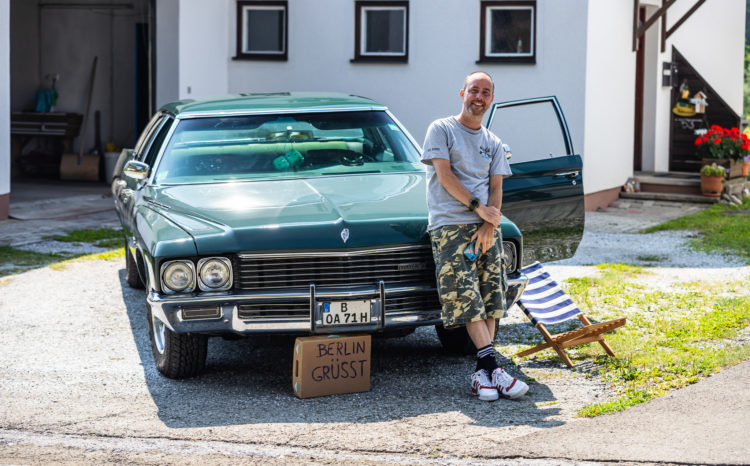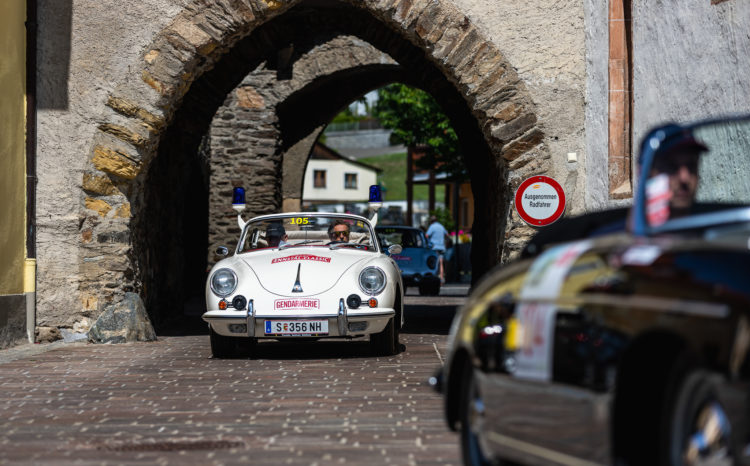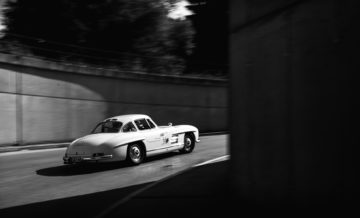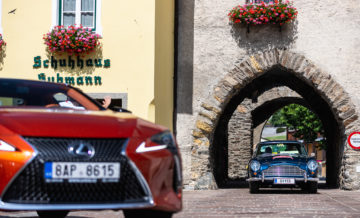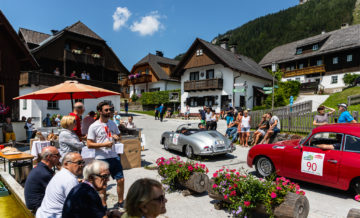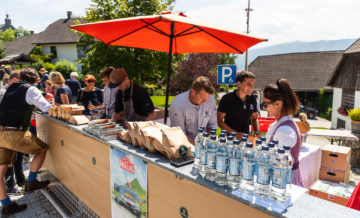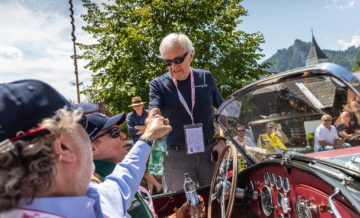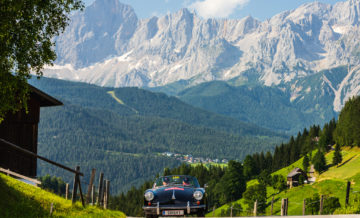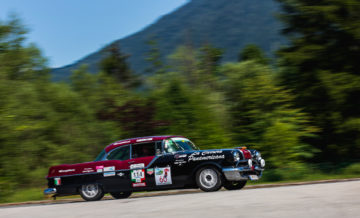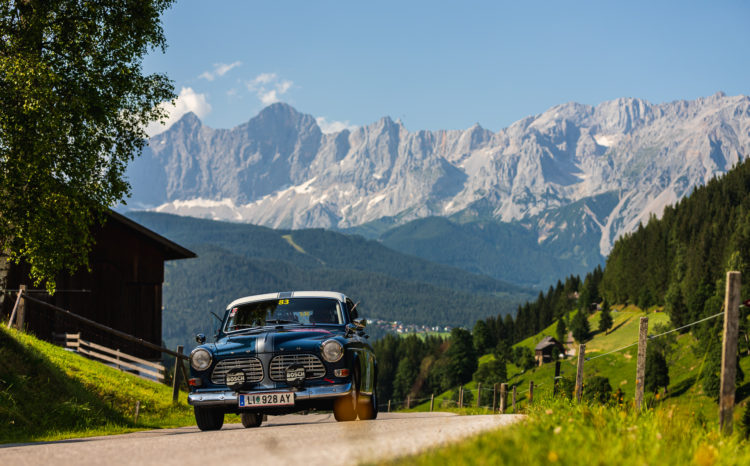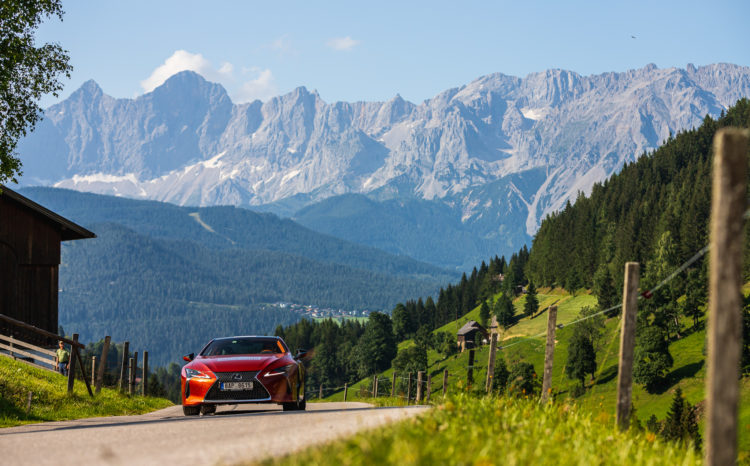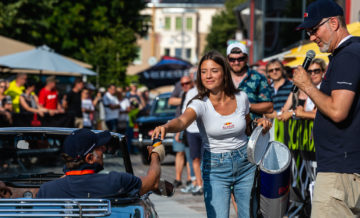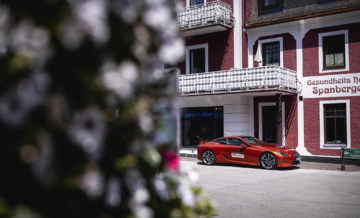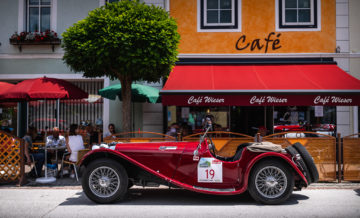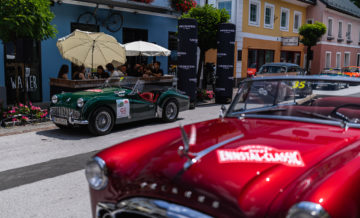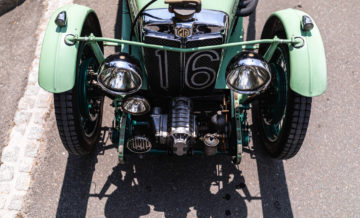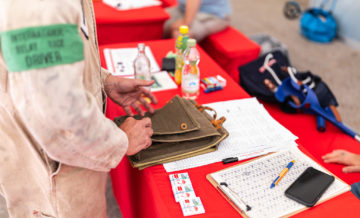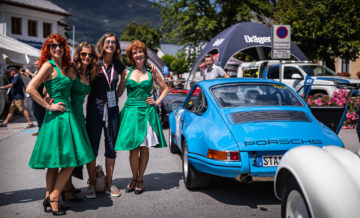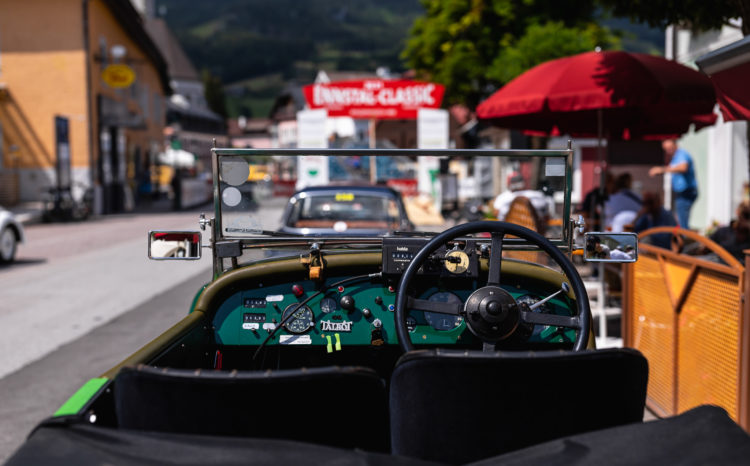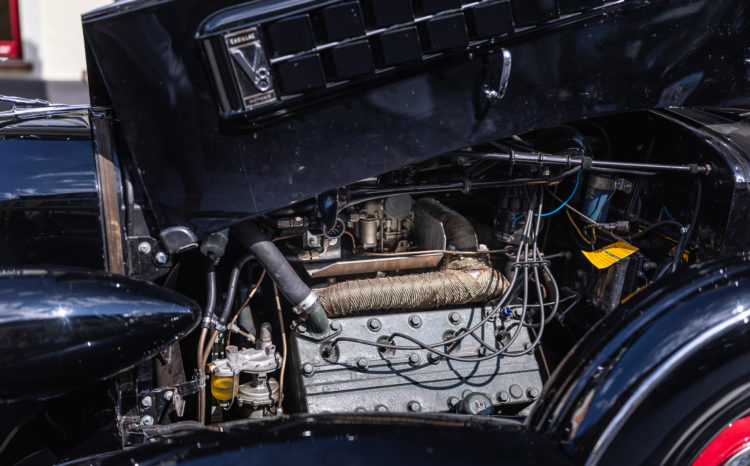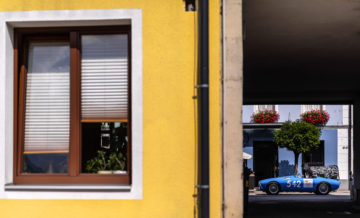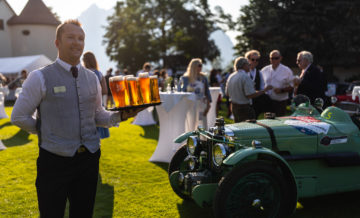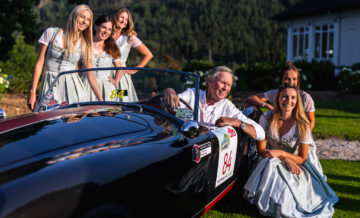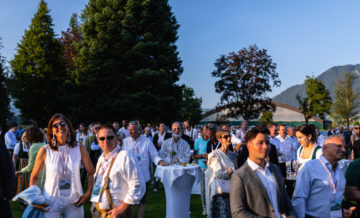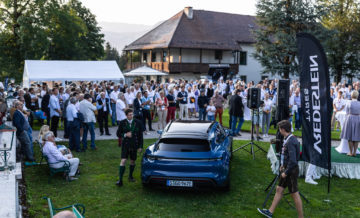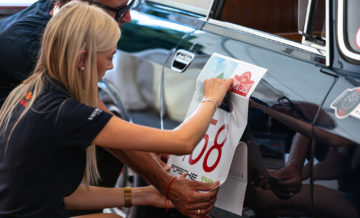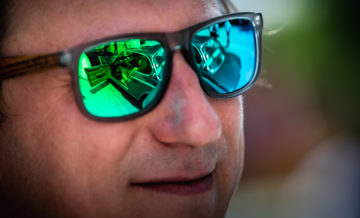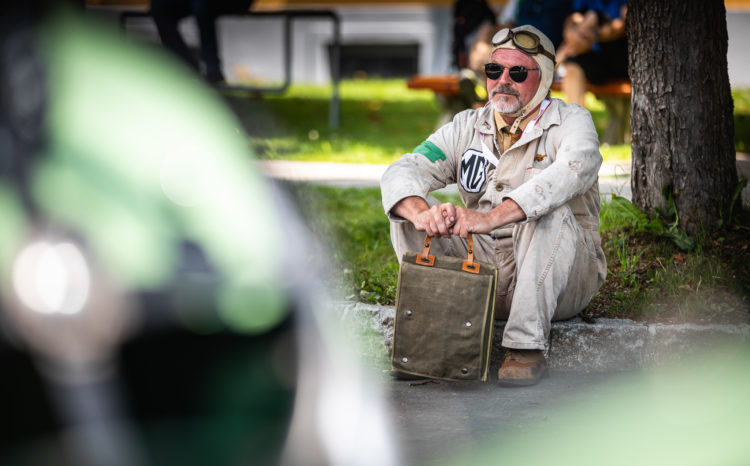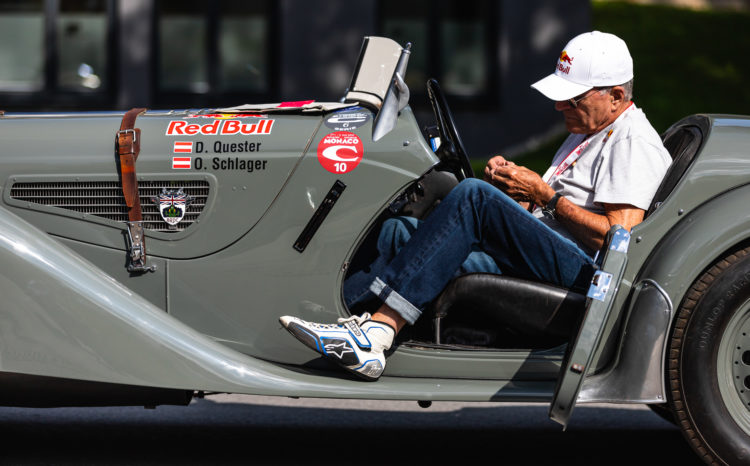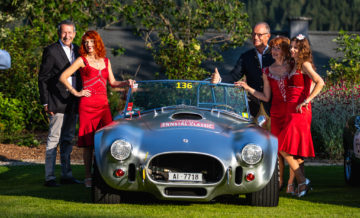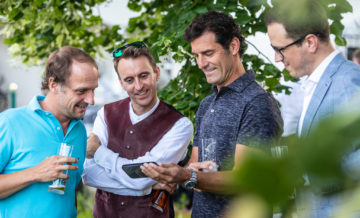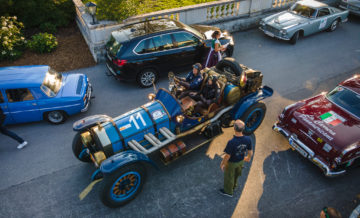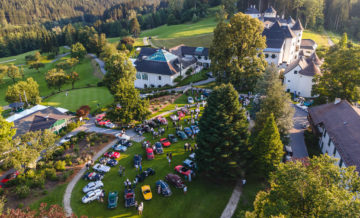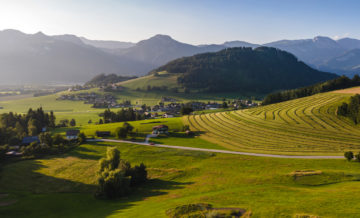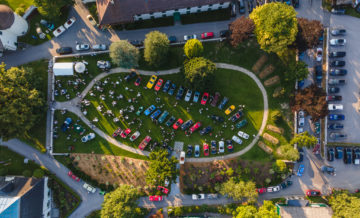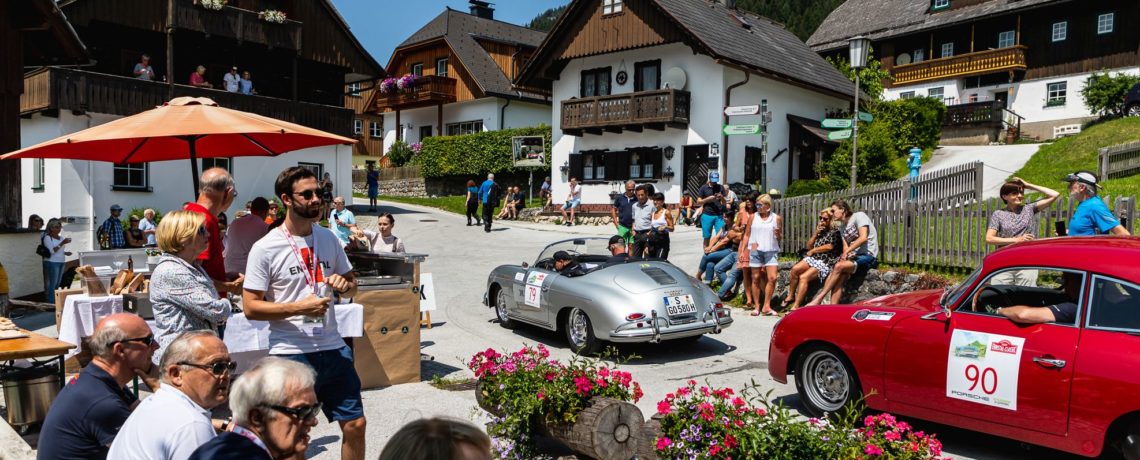
ENNSTAL-CLASSIC 2021 AND FRESH AIR
Summer Steiermark may be more attractive with its breathtaking natural scenery, but we came to Gröbming for another good reason – because of the classic engines and the people around famous Ennstal-Classic.
Words: František Vahala, Pictures: Ondřej Kroutil, Copyright: Steering Media
The journey from Prague to the south will not begin until the moment when you connect to the motorway heading to Linz in Austria. Until then, unpleasant traffic lights await you on excavated sections or rows of trucks and heavy traffic. So if you don’t leave Prague at five in the morning, like we did. The pistons of the eight-cylinder engine of our test Lexus LC500 pound at a calming, confident pace. Around half past six in the morning we have breakfast behind České Budějovice, at a quarter to twelve we pick up accreditation in the picturesque town of Gröbming, which is the center of the whole Ennstal-Classic circus.
NOISE IN THE TOWN
With Birgit Glöckner, who together with her husband Michael is the heart and soul of the Ennstal-Classic race, we fine-tune the details and then we sit in a popular restaurant near the post office, where we have a classic wiener schnitzel with french fries and vegetables. Almdudler fine apple lemonade is a must. Wednesday includes a thorough technical inspection. Gasoline and oil smell all around, the asphalt burns hot and the noise of classic engines is heard from all directions. The atmosphere of the preparations engulfed us, we walk among the cars and after a one-year break we greet everyone known and even unknown.
LONG TRADITION
Ennstal-Classic has a tradition since 1993. Sir Stirling Moss won the first year and over the years a number of famous names from motorsport have appeared on the starting list. No wonder – the main organizer Michael was a motoring journalist and photographer for years, and he knew most of the racing celebrities from the days when you could smoke onboard a plane, nobody cared about car emissions and when entering the store, half of your face was not covered with a cloth. Over time, the race has developed into its current form, with over 200 crews starting in four epochs.
The very environment of the Hohe Tauern, landscaped villages with typically Austrian mountain architecture complemented by dominant mountain peaks (Hocher Dachstein, 2995 m above sea level) completes the picture. Cleanliness and freshness radiate not only from the wild mountain slopes, but also from the local people. In short and simply, the Schladming-Dachstein region is cool. In winter, the Planai mountain in particular is a paradise for skiers, and in the summer, lovers of mountain tourism will enjoy a wide range of sports and relaxation activities.
WARM WELCOME
Ennstal-Classic is traditionally divided into several days and for participants it is practically an event for a whole week. That is why the summer holiday date is actually chosen appropriately. Tuesday and Wednesday are marked by the aforementioned technical inspections and relaxed gossip. The occasional thrill caused by starting one of the cars is a pleasant diversion. A welcome party awaits us on Wednesday evening in the modern Schloss Pichlarn. Our random friend Sabine, who we do garde, explains to us how the fashion of local typical clothing has returned in recent years – a women’s costume called a dirndl and a men’s suit consisting of leather pants (mostly deerskin), both short and long, and often checkered shirts. It is estimated that almost half of the locals arrived in a tasteful traditional costume. A rich and tasty dinner is the basis, but we will enjoy the night after the race, on Saturday’s “night of champions”.
CARS AND PEOPLE
It’s time to look at the starting list, which is a varied mix of all sorts of cars from 1918 to 1972 (younger cars are not eligible). Ennstal-Classic has the great advantage that both the expert and the layman can get a pretty clear idea of which cars actually attract him the most. They will meet different types of Mercedes, Porsche, Alf Romeo, Fiat, Jaguars, MG, Triumph or Austin-Healey side by side. The starting field is really colourful and offers a fresh mix of great sports as well as common models. And of course different specialties. One of the most interesting cars ever was American La France from 1918. The huge car shone with brass, but its racing origin was clearly recognizable. The beast showed itself when Richard Gebert start the brutal 14.5-liter six-cylinder Simplex with 150 horsepower and the chains then spun the rear wheels of the 3.5-ton machine. La France deserved the most respect, and rightly so – in addition, imagine that someone was able to travel the distance from Beijing to Paris with it! Other specialties at the start? Virtually every car from the first era, from the great Sunbeam Supersport through the Alfa Romeo 6C to the Alvis Silver Eagle 16/95 or Talbot Lond 90 AV. Or sweat MG C with two cool American gentlemen inside small cockpit – Curtis and Dan enjoyed every moment with grace! Like the others…
The rest of the starting field didn’t have to be ashamed at all, on the contrary – we admired everything possible, from the beaten Lancia Aprilia Zagato, through the polished Jaguars SS or BMW 328 to the amazing OSCA MT 4 or Maserati A6 GCS with a ladies crew. Splendid!
LETS GO!
Already on Thursday, the Prologue with a length of 400 kilometers awaits us. On Friday, a section called Marathon follows, also with a even bigger portion of kilometers. Needless to say, we usually drive through the surrounding valleys and mountain passes. Although everything happens „around the chimney“, the individual stages between time checks are quite long. In addition, part of Friday’s stage from Bad Ischl to the northwest had to be canceled this year because roads around the Wolfgangsee and Mondsee lakes disappeared due to flash floods. We must be satisfied with the mentioned spa town and a welcome from a fictional imperial couple in the form of Sissi and Franz Josef.
Friday’s part examined the crews even more intensively – almost 500 kilometers of scenic roads around Mariazell, Steyr, Spital am Pyhrn back to Liezen and the destination in Gröbming. Summer temperatures and the bright sun shine not only mean sharp light for the camera, but also increased demands on people and technology. We manage the whole day quite well, just thoroughly sweating and needless to say, the cold beer at the evening Porsche Night stylized in German gastronomy just hisses. One of the biggest experiences of the day was meeting of Simo Lampinen: that’s right, one of the original flying Finns, the legendary rally driver, the three-time world champion. „I flew to Ennstal-Classic straight from Helsinki in the morning. A friend lent me the amazing Lancia Flavia, which he renovated for six years. It’s a great car, and a great event,“ he blurted out. Despite his painful back, he kept smiling and handing out joy as only cool relaxed racers who had experienced the old days of wild racing can. And they survived them. Like Rauno Aaltonen, the eternally friendly Mini driver, famous mainly in the Monte Carlo rally. A slightly younger generation of racers was again represented by Mark Weber, again riding a Porsche 550 Spyder from the Stuttgart Museum. In short, good company!
UPHILL AND BACK
Saturday has a completely different charm – not hundreds of kilometers await us, but at six in the morning we go to Stoderzinken, to a height of about two kilometers. It means hundreds of turns and a thorough test of our ability to slide effectively with a two-ton GT on narrow roads, but also the endurance of classic technology and the concentration of crews. GPS devices have been removed from race cars and now they have the task of overcoming a challenging trip according to the given average speed. The cars with a year of production until 1972 travel uphill at 46 km/h!
BECAUSE RACECAR
We return to the center of Gröbming to enjoy an impressive flying show from the Flying Bulls, introduced by a warning siren. Soon the roar of the Pratt & Whitney R2800 star engine of the American Vought F4U Corsair fighter and a pair of Alliston twelve-cylinder aircraft engines in the gondolas of the absolutely amazing Lockheed P-38 Lightning resonate over the town. The impressive 3D show is replaced by no less impressive ground action – as part of an exciting journey through the town, we admire some pieces from the starting field (Maserati A6GCS, Sunbeam Supersport, Mini with a crew of flying Finns and so on), but also something extra: for example the rare Salmson, racing Ferrari Dino or Porsche 906. The new 911 or Ferrari Roma complete the atmosphere of continuity.
The last accuracy test is traditionally held with the massive support of hundreds of visitors scattered along the track. It is a magnificent show, the last few measured sections (here in the traditional form of a hundredth seconds test) decide the winner. In this case, the fourth success of the Fritz Radinger/Thomas Wagner crew with the Mini 1275 GT before the women’s crew Margarita/Magdalena Voglar with Alfa Romeo Giulia TI and also Erich and Roswith Volks with the Ford Mustang. How to win Ennstal-Classic? The winning crew is clear: most importantly, constantly concentrating. Drive like in a tunnel, don’t get distracted at all!
You can check all results here…
